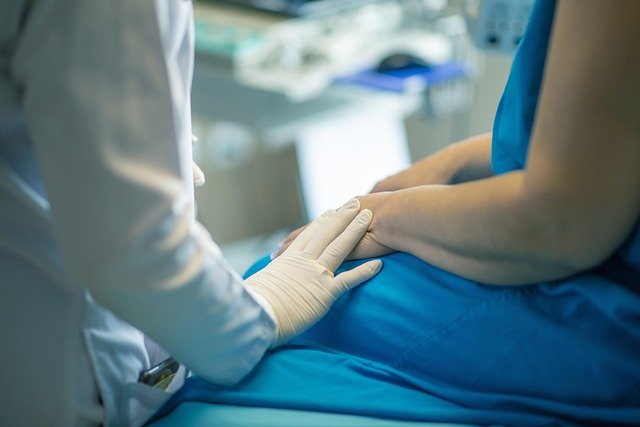Rhinoplasty: Understanding Nose Surgery and Its Cosmetic Benefits
Rhinoplasty, commonly known as a "nose job," is a surgical procedure that reshapes or resizes the nose. This popular cosmetic surgery can enhance facial harmony and boost self-confidence for many individuals. Rhinoplasty is not only performed for aesthetic reasons but can also address functional issues such as breathing difficulties caused by structural abnormalities of the nose.

Who are ideal candidates for nose surgery?
Ideal candidates for rhinoplasty are individuals who have realistic expectations about the outcome of the surgery and are in good overall health. Patients should be at least 15-16 years old, as it’s essential that facial growth is complete before undergoing the procedure. Those seeking rhinoplasty may have concerns about the appearance of their nose, such as a prominent hump, a bulbous tip, or asymmetry. Additionally, individuals experiencing breathing difficulties due to structural issues in the nose may benefit from functional rhinoplasty.
What are the different types of rhinoplasty procedures?
There are several types of rhinoplasty procedures, each tailored to address specific concerns:
-
Open rhinoplasty: This technique involves making a small incision on the columella (the tissue between the nostrils) to access the internal nasal structures.
-
Closed rhinoplasty: In this approach, all incisions are made inside the nostrils, leaving no visible external scars.
-
Tip plasty: This procedure focuses on reshaping the nasal tip without altering other parts of the nose.
-
Septorhinoplasty: This combines cosmetic rhinoplasty with correction of a deviated septum to improve both appearance and breathing.
-
Revision rhinoplasty: This is performed to correct issues from a previous nose surgery or to make further improvements.
How should patients prepare for rhinoplasty surgery?
Preparing for rhinoplasty involves several steps to ensure the best possible outcome:
-
Consultation: Meet with a board-certified plastic surgeon to discuss your goals, medical history, and any concerns.
-
Medical evaluation: Undergo any necessary medical tests to ensure you’re in good health for surgery.
-
Lifestyle adjustments: Stop smoking and avoid certain medications that can increase bleeding risk, as advised by your surgeon.
-
Arrange support: Plan for someone to drive you home after the procedure and assist you during the initial recovery period.
-
Prepare your recovery space: Set up a comfortable area at home with essentials like ice packs, pillows, and easy-to-reach items.
What can patients expect during recovery from nose surgery?
Recovery from rhinoplasty is a gradual process that requires patience and careful adherence to post-operative instructions:
-
Initial recovery: Expect swelling, bruising, and discomfort for the first 1-2 weeks. A splint or cast may be placed on your nose for protection.
-
Activity restrictions: Avoid strenuous activities and exercises for several weeks as advised by your surgeon.
-
Follow-up appointments: Attend all scheduled follow-up visits to monitor your healing progress.
-
Gradual improvement: While initial changes will be noticeable once swelling subsides, final results may take up to a year to fully develop.
-
Sun protection: Shield your nose from direct sunlight to prevent discoloration of the healing skin.
How much does rhinoplasty typically cost?
The cost of rhinoplasty can vary significantly depending on factors such as the surgeon’s expertise, geographical location, and the complexity of the procedure. Here’s a general overview of rhinoplasty costs from reputable providers:
| Provider | Location | Average Cost Range |
|---|---|---|
| Mayo Clinic | Various US locations | $7,000 - $12,000 |
| Cleveland Clinic | Ohio, USA | $6,500 - $15,000 |
| Johns Hopkins | Maryland, USA | $6,000 - $14,000 |
| The Harley Medical Group | UK | £4,000 - £7,000 |
| Westside Face | Los Angeles, USA | $8,000 - $20,000 |
Prices, rates, or cost estimates mentioned in this article are based on the latest available information but may change over time. Independent research is advised before making financial decisions.
It’s important to note that these costs typically include surgeon’s fees, anesthesia, and facility fees. However, additional expenses such as prescription medications, post-operative care, and any necessary follow-up procedures may not be included. Many plastic surgery practices offer financing options to help make the procedure more accessible.
Rhinoplasty is a complex and personalized surgical procedure that can significantly impact both appearance and function of the nose. When considering nose surgery, it’s crucial to choose a board-certified plastic surgeon with extensive experience in rhinoplasty. By understanding the process, preparing adequately, and having realistic expectations, patients can approach rhinoplasty with confidence and increase their chances of achieving satisfactory results.
This article is for informational purposes only and should not be considered medical advice. Please consult a qualified healthcare professional for personalized guidance and treatment.





